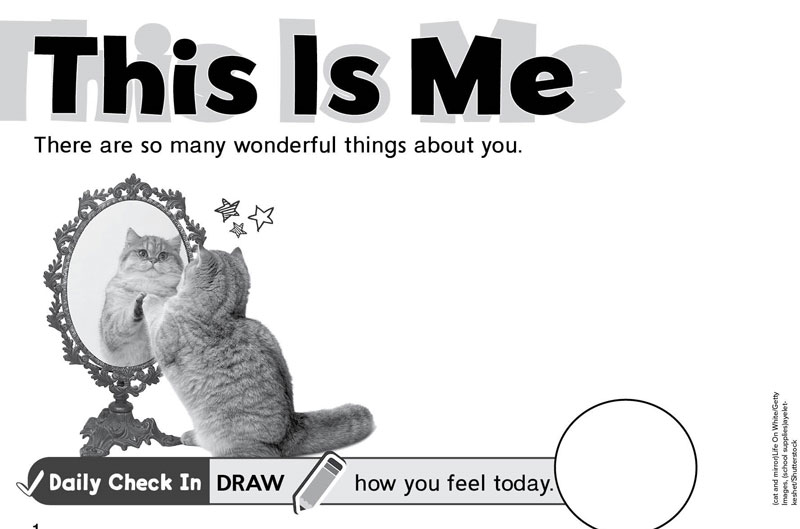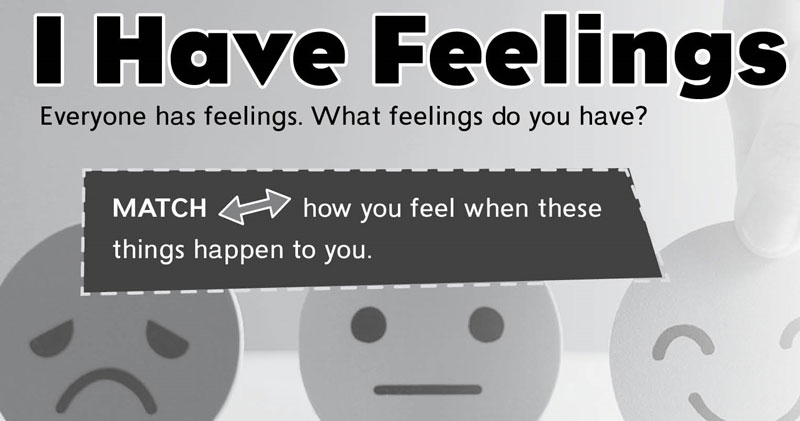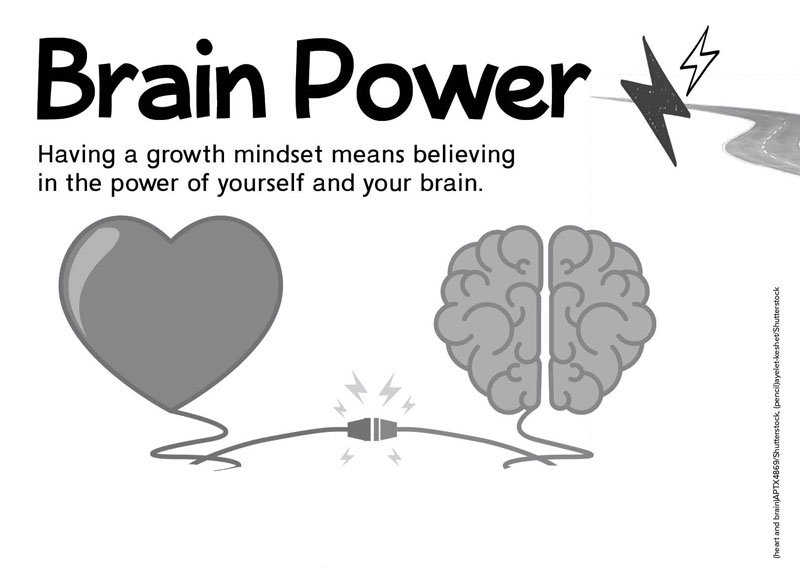Self-Awareness

Find this activity in the student portfolio
Objective: Students will be able to identify what makes them who they are.
Estimated Duration: 20 minutes
Description: In their early years, children are just beginning to develop an identity of their own, and to recognize that they are individuals separate from others.
It is important for teachers to nurture this emerging sense of self-identity, so each child learns to recognize herself or himself as a unique and special individual.
Before beginning this activity, share what is special about you. Tell students about the things that make you unique. Then, ask them to share what makes them special.
This activity will allow students to think about all the wonderful things that make them who they are. They will cut out and glue pictures of things that describe them.
Teachable Moments: There are many ways you can help improve and build self-identity in your students:
- Create a warm, welcoming, and nurturing environment.
- Take time to acknowledge children’s accomplishments and progress.
- Ask students about their cultures. Show students how to embrace and respect each other's differences.
- Highlight the special abilities and qualities of each child by pointing out their talents and strengths to make him or her feel good about who they are.
- Be a good role model; talk about yourself using positive language.
- Let students help with classroom jobs to help them feel like valuable members of the group.
- Give children opportunities to express their opinions, ideas, and feelings.

Find this activity in the student portfolio
Objective: Students will be able to identify their emotions.
Estimated Duration: 15 minutes
Description: It’s important for children to be able to express verbally how they are feeling. Children who understand their emotions are less likely to act out by using temper tantrums, aggression, and defiance to express themselves.
Teaching students to identify their feelings helps them to become better communicators. When they know how they feel, they can tell others what they need and want (or don't want!). It also helps to build better relationships with peers.
Before beginning this activity, have students act out different emotions. As they do, have them label the emotions so they can practice naming feelings.
This activity will help students identify their feelings. They will match actions to feelings.
Teachable Moments: There are many ways you can help students identify their emotions:
- Talk about your different emotions and explain what makes you feel that way. Ask children to share the things that make them feel that same emotion (e.g., Today I am feeling excited because I am going to visit my friend. What makes you feel excited?).
- Help children learn to label their own emotions (e.g., it looks like you are feeling mad that we can't go outside; what can we do to help you feel better?).
- Have students name their emotions and the behaviors associated with them (e.g., happy = smile, sad = cry, angry = stomping feet).
- Use picture books to illustrate different emotions and facial expressions.
- Sing silly songs about feelings (e.g., If You’re Happy and You Know It). Sing the song with facial expressions, voice, and actions that match the feelings.

Find this activity in the student portfolio
Objective: Students will learn about and build self-love.
Estimated Duration: 15 minutes
Description: Many of today’s children are faced with an overwhelming amount of negative energy. To help students overcome this, it is important to teach children how to see positivity in their lives.
Having a more positive mindset can help them overcome adversity, deal with challenges, and meet their personal goals. Learning self-love is a huge part of having a positive mindset. Self-love is a deep overall acceptance and appreciation for who you are as a whole. It is loving your brain, your body, and your feelings.
Before beginning this activity, have students think about people who love them and discuss reasons these people might love them. This will get them prepared to think about what they love about themselves.
This activity will help students build self-love by having them draw a picture of what they love most about themselves.
Teachable Moments: There are many ways you can improve and build self-love in your students:
- Have students practice positive self-talk. Model positive self-talk.
- Teach students how to accept mistakes they make. Model how to overcome mistakes when you make one.
- Teach students how to practice self-care. Some ideas for self-care for kids include playing outside, eating a healthy snack, reading a book, playing with a pet, or drawing.
- Promote kindness throughout your classroom.

Find this activity in the student portfolio
Objective: Students will build a growth mindset.
Estimated Duration: 15 minutes
Description: Sometimes we get down on ourselves and think that we can’t do things. With practice and hard work great things can happen. Just because you can’t do it now doesn’t mean you can’t ever do it. It just means you can’t do it YET.
Adding the word YET changes your brain to think with a growth mindset. Developing the right growth mindset early on is crucial for a successful and happy life. When kids learn to put forth the right effort and use the right strategies, they can get better at things, they feel empowered, and try harder. When they know their brains are capable of growing, they are more confident, resilient, and are not as afraid to fail.
Before beginning this activity, share what you do when you make mistakes or can’t do something you want to do. Tell students about the things that you tell yourself to help have a growth mindset. Then, ask them to brainstorm things they could tell themselves to help them when they are struggling.
This activity will help students learn about growth mindset by having them color the sentences that tell how to grow your brain. Students might need help reading the sentences.
Teachable Moments: There are many ways you can help improve and build a growth mindset in your students:
- Speak positively when you encounter difficulty.
- Be mindful of feedback, emphasize effort and improvement over talent and intelligence.
- Praise the process, not just the result.
- Discuss your own mistakes and struggles.
- Explain that failure is a part of the process of learning new things.
- Teach the power of using the word yet.
Foldable®: Selfie Moments
Estimated Duration: 25-30 minutes

- Cut along the outside solid black lines of the two half-heart foldables.
- Fold along the dotted line on the left of each rectangle to form an anchor tab.
- Glue the folded tab on top of the gray space in the student book where it says: Glue Anchor Tab Here.
- On top of the first tab, students draw a picture to finish the phrase, I LOVE me because…
- Under the tab, they can draw a second picture to illustrate something else they love about themselves.
- Under the tab, they can draw a second picture to illustrate something else they love about themselves.
- On top of the second tab, students draw a picture to finish the phrase, I feel love when…
- Under the tab, they can draw a second picture to illustrate a time when they feel love.
Go to other SEL competencies in this book (Primary 1 - PreK–K):

The teaching suggestions only work in accompaniment with the student portfolio, which has all the activity pages.
The teaching suggestions here are also available within a PDF of the entire teacher's manual.